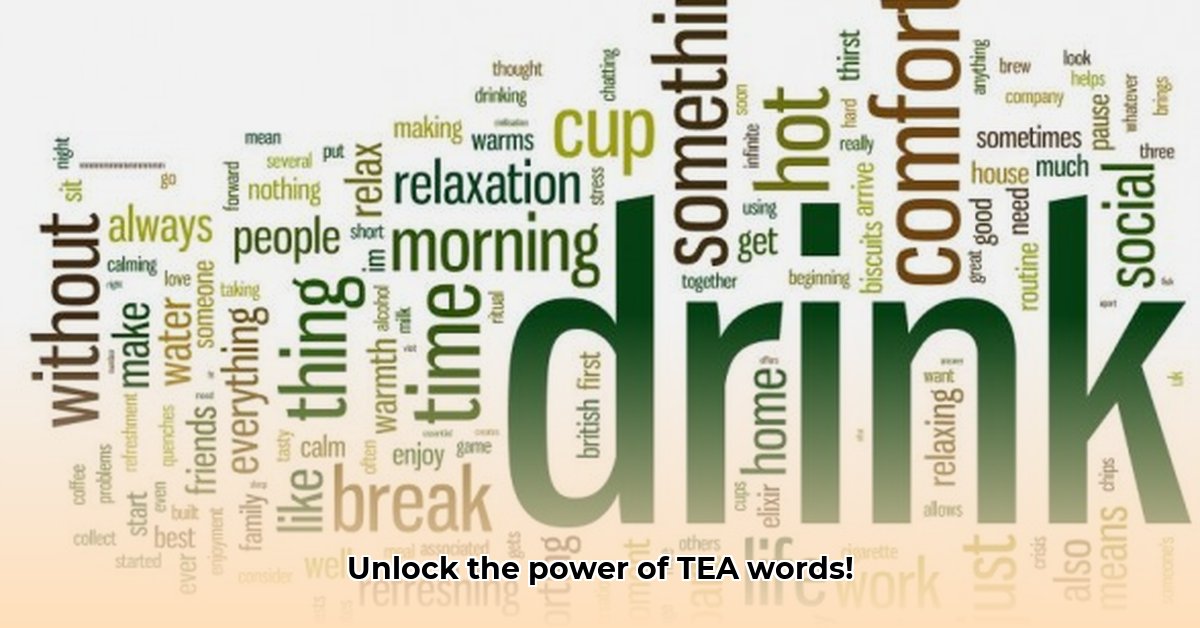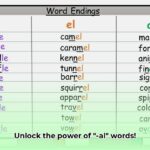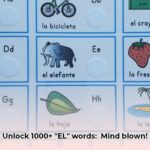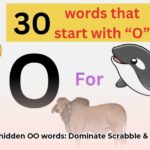Decoding “Tea” Words: Frequency, Semantics, and Origins
This analysis delves into the fascinating world of words starting with “tea,” exploring their frequency, semantic categories, etymological roots, and the cognitive associations they reveal about the structure of the English lexicon.
For a broader look at word origins, see this helpful list of words starting with “con” words starting with “con”.
The sheer number of “tea” words varies significantly across dictionaries, highlighting the inherent challenge of defining a “word” in linguistic research and emphasizing the need for standardized inclusion criteria in lexical studies. This analysis addresses this complexity by focusing on established dictionaries and lexical databases.
“Tea” words often cluster around specific semantic fields. The most prominent relate to tea consumption (e.g., teapot, teacup, teabag, tea leaf), teaching and learning (e.g., teacher, teachable, teaching), and emotions (e.g., teasing, tearful, tedious). Examining these clusters reveals intriguing cognitive connections and potential metaphorical extensions within the lexicon. For example, the connection between “tea” and emotional states suggests potential avenues for future research into the metaphorical use of language.
Etymological exploration of “tea” words provides illuminating insights into the evolution of language. Tracing connections back to the Camellia sinensis plant and uncovering historical influences from various cultures enriches our understanding of how these words have become embedded in the English language. This exploration also provides a historical context for the beverage’s global journey, highlighting the cultural exchange and adaptation that have shaped tea terminology.
This research has significant implications for various fields, including education (vocabulary building strategies), lexicography (standardization and dictionary development), and computational linguistics (natural language processing and semantic analysis).
Standardizing “Tea” Word Categorization for Enhanced NLP
This section addresses the crucial challenge of standardizing the semantic categorization of “tea” words to enhance Natural Language Processing (NLP) analysis. Establishing a consistent framework for classifying these words is essential for improving accuracy and efficiency in computational linguistics.
Defining the scope of “tea” words is paramount for effective categorization. Should the scope encompass words directly related to the beverage, objects associated with tea preparation and consumption, or even metaphorical uses like “spill the tea”? This analysis proposes a tiered approach, starting with core tea-related terms and progressively incorporating related concepts and metaphorical extensions.
Granular semantic categorization is key to nuanced analysis. Distinguishing between categories like “beverage-related” (tea, infusion, brew), “object-related” (teapot, teacup, tea strainer), “event-related” (tea party, high tea, tea ceremony), and “metaphorical” (spill the tea, not my cup of tea) allows for more precise computational processing and interpretation of text.
Standardization requires a combined approach leveraging both automated NLP tools (e.g., WordNet, semantic networks) and expert human review. This iterative process ensures accuracy, resolves ambiguous classifications, and adapts to the dynamic nature of language. Machine learning algorithms can be trained on curated datasets to improve automated categorization over time.
A well-defined methodology with clear categories, guidelines, and standardized tagging conventions is fundamental for ensuring reproducibility and facilitating collaborative research in NLP.
Mastering Tea-Related Vocabulary: A Multifaceted Approach
This section explores effective strategies for mastering tea-related vocabulary, empowering individuals to enhance their understanding and retention of these terms.
Understanding the etymology of “tea” and related words provides a strong foundation for vocabulary expansion. Tracing the word’s journey from its Chinese origins to its global adaptations deepens comprehension and provides connections to other languages and cultures. This historical context enriches the learning experience.
Contextual learning, achieved through immersion in tea-related literature, discussions, and real-world experiences, strengthens retention. Encountering words like “teapot,” “teacup,” and “gaiwan” within the context of a tea ceremony or tasting fosters a deeper understanding than isolated memorization.
Spaced Repetition Systems (SRS), such as Anki or Quizlet, optimize recall by strategically scheduling reviews based on individual learning curves. This technique enhances long-term retention and minimizes forgetting.
Integrating multimedia resources, including images, videos, and audio recordings, reinforces learning. Pairing the word “tearoom” with a visual representation or the word “gongfu” with a video demonstration creates a more vivid and memorable connection.
Personalized learning pathways that recognize individual learning styles are vital. Combining traditional and technological methods, incorporating writing and speaking exercises, and actively engaging with online and offline tea communities are all effective strategies for building a robust tea vocabulary.
Navigating the Evolving Landscape of Tea Terminology
This section examines the challenges posed by the evolving landscape of tea terminology and offers strategies for maintaining a robust and adaptable understanding.
The fragmented nature of tea terminology presents a significant challenge. Inconsistent definitions of terms like “high-grown” tea, regional variations in flavor descriptors, and evolving production methods can hinder clear communication within the tea industry and among consumers.
Bridging the divide between scientific analysis (chemical composition, processing techniques) and consumer-friendly terminology is crucial. Translating complex scientific data into accessible language empowers consumers to make informed choices and appreciate the nuances of tea.
To navigate this complex landscape, consumers should actively seek detailed product descriptions, explore the scientific basis of tea flavor and aroma, consult standardized resources like glossaries and industry publications, and engage with tea communities to share knowledge and experiences. Furthermore, fostering collaboration between tea producers, consumers, researchers, and regulatory bodies is essential for establishing a more unified and comprehensive tea terminology. This collaborative effort should focus on developing standardized definitions, addressing regional variations, and incorporating new terminology as it emerges within the evolving tea industry.
- Discover Fermentation Revolution: The Health Benefits of Kimchi: Sustainable Farming Practices - July 30, 2025
- Discover Living Crystals: The Giant Gypsum Formations in Naica’s Cave: A Geological Marvel - July 30, 2025
- Master Molecular Gastronomy: The Science That Turns Your Kitchen into a Lab: Beginner-Friendly Recipes - July 30, 2025
















